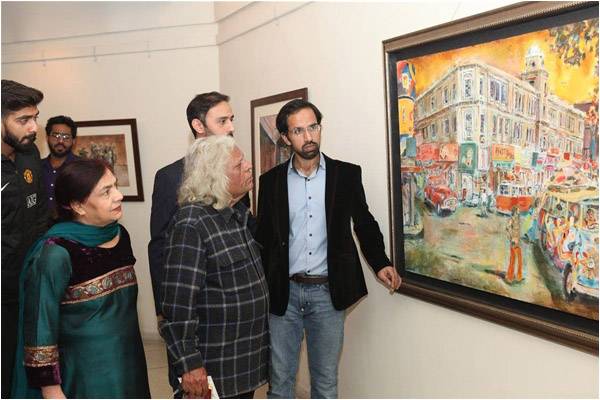
“The brush is for saving things from chaos.”
– John Berger.
Art in some cases can be a meditation on loss, but it has always been a powerful tool for voicing our innermost displacements and impediments: both on an individual level or on a broader cultural level. We encounter this sort of sensitivity, for instance, in Frida Kahlo’s paintings: a victim of polio in her childhood, she took to the canvas as her skin and the viewers feel both the element of touch and sight in her artwork.
Barkaat Mazhar’s first Solo exhibition “The Quest for Barkaat: A pilgrimage in Art” was held at Alhamra Art Gallery, from 1st to 3rd December, 2015.
For Barkaat, to venture into a previously unexplored trajectory of art was a calling, a catharsis and a form of emancipation. It was meant to forego silence after a road traffic injury resulted in five brain surgeries, two and a half months of coma and paralysis of the right side of the body. His eldest sister Arshia (based in the US), a neurologist but very well versed in art, describes the gigantic task it was to employ art in his recovery.
It was a process spread over two years - a therapeutic attempt to activate his non-dominant hand and use it to draw for the first time after the accident. She recalls:
“Attempting to draw and paint with his left hand was a measure of desperation, as his other means of expression had been halted. Any major adversity is a life-changing phenomenon. On one hand, adversity threatens one’s existence in the parameters that they are accustomed to, and on the other hand it forces one to visualise what is truly important in their life for them. Adversities can make or break people. Barkaat was extraordinarily intelligent - highly gifted in terms of lexical qualities and vocabulary. It was very difficult for the whole family, but especially for Barkaat that he lost his strongest asset.”
Barkaat had to activate his non-dominant hand and use it to draw for the first time after the accident
The sixty paintings that graced the Alhamra gallery’s cube on the opening night of Barkaat’s first solo exhibit titled “The Quest for Barkaat: A pilgrimage in Arts” unfolded an extraordinary narrative. The exhibition documented series from his earliest sketchbook works when he began activating his left hand for the first time to scribble and draw, followed by the richness and maturity he achieved in terms of both medium and observation through the later oil-on-canvas series.
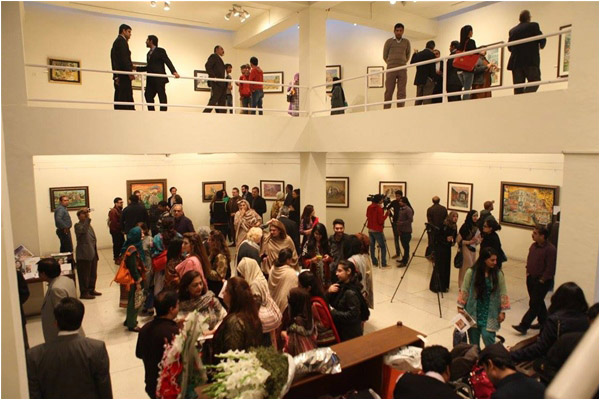
The sketchbook works were no longer seen as measure of desperation but instead offered a quiet, introverted yet sound analogy through graphite pencils and rendering mediums. The varying degree of hues, lightness, as well as their restricted scale, was both an urgent and slow attempt for Barkaat to reconcile with his own existence.
Condensed into the sizes of the sketchbook pages, we encounter excerpts and anatomies of a city’s presence and absence, the dynamic movement of the equestrians and significance of the rituals in the ordinary.
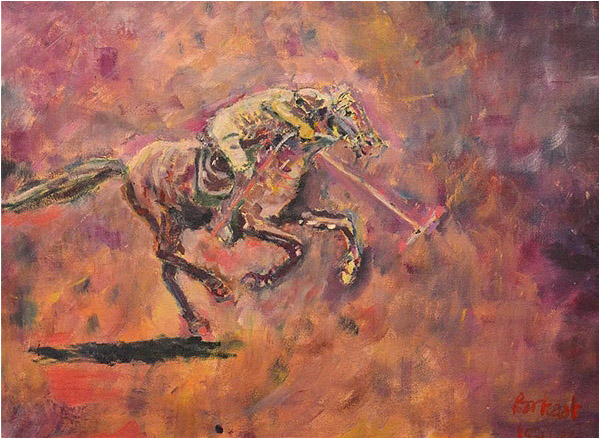
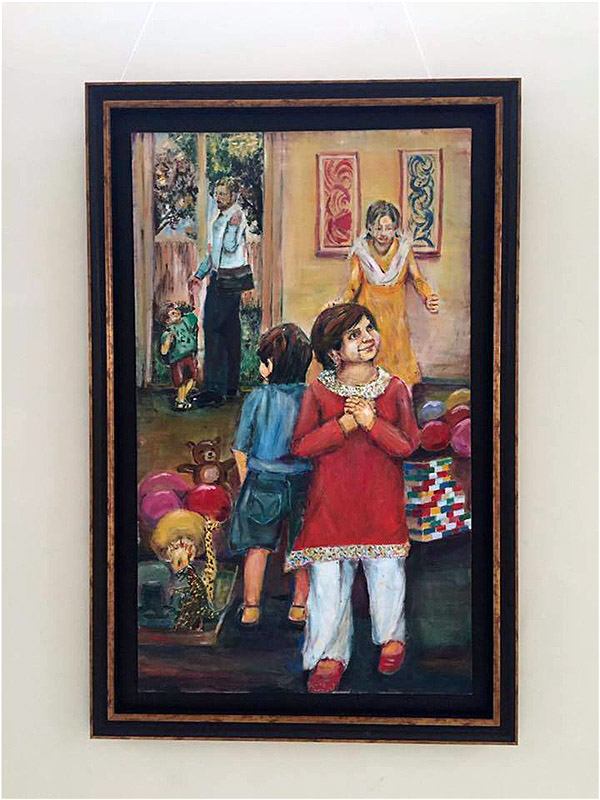
Barkaat paints depths of water, trees, boats, and the stillness of the portraits as preludes and manifestations of his own journey. One watercolor drawing, ‘The Steady Going’, where a sitting, steadily perched young boy, a labourer, sits gazing down upon his own activity executed in unbearably light, brief and muted brushstrokes. The drawing slowly make itself more visible as we begin to make out its own outline. The lightness of these watercolor drawings and similar portrait studies, which almost seem to disappear into the pages, embolden us. They make us search for our own selves. We begin asking ourselves who we are within the parameters of broader society.
In the later oil-on-canvas series, Barkaat ventures into the lives of labourers and common folk, celebrating the ordinary in the tradition of great artists such as Van Gogh. In the process of identifying his own obstacles and overcoming them, he becomes one with his surroundings. With an absolute faith in his paintbrush, Barkaat proceeds promisingly with his non-dominant hand, tactfully laying down attentive details.
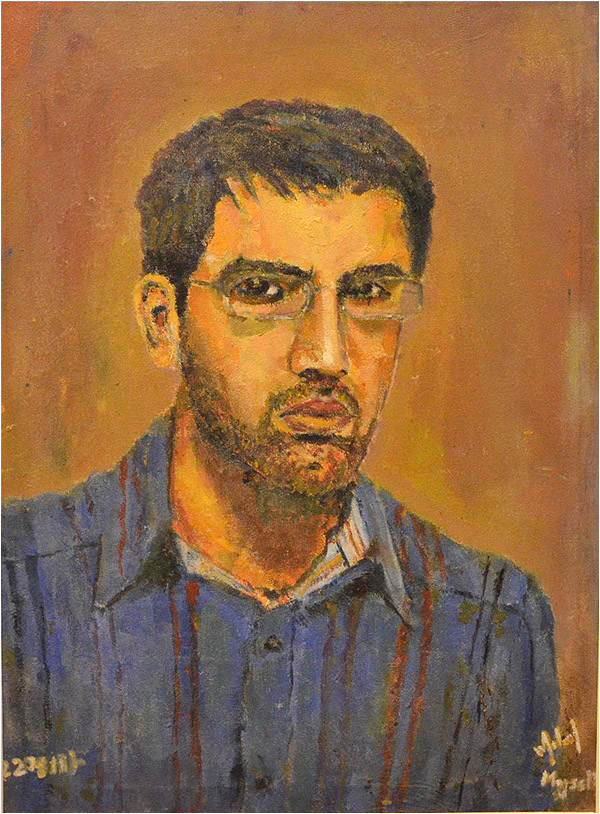
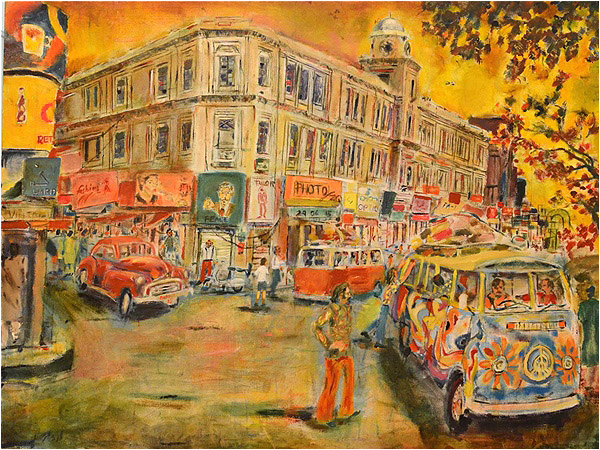
Barkaat ventures into the lives of labourers and common folk
In ‘The Search for Polychrome Series’, the variegated, stylised patterns of truck mural art dissolve into the background - the figures and folds of their garments transporting us from a tangible encounter into an intangible one. These polychromatic paintings arrive to us like magnified vintage postcards: we hold on to them like souvenirs from a familiar place and time, exemplifying nostalgia, only to reaffirm the presence of the visible.
Amina Rizwan is a metalsmith, visual artist and writer. She is currently an Assistant Professor at the Pakistan Institute of Fashion and Design, Lahore

